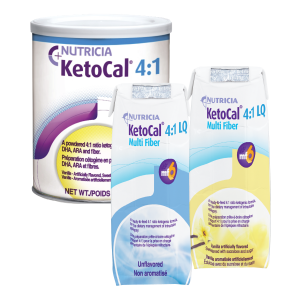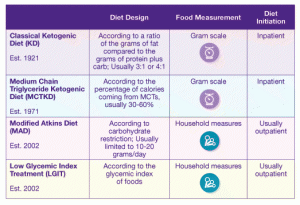 The ketogenic diet can help manage seizures in patients with refractory epilepsy. In fact, research shows that just over half of children on the ketogenic diet will have 50% or more improvement in seizures, about 1/3 of children will have over 90% improvement in seizures and about 10-15% will become seizure-free. While it can be helpful with seizure management, being on the ketogenic diet can be challenging at times. In today’s blog post, I will tell you a little about how KetoCal can be a helpful addition to the ketogenic diet.
The ketogenic diet can help manage seizures in patients with refractory epilepsy. In fact, research shows that just over half of children on the ketogenic diet will have 50% or more improvement in seizures, about 1/3 of children will have over 90% improvement in seizures and about 10-15% will become seizure-free. While it can be helpful with seizure management, being on the ketogenic diet can be challenging at times. In today’s blog post, I will tell you a little about how KetoCal can be a helpful addition to the ketogenic diet.
KetoCal Everyday Convenience
If you have a child on the ketogenic diet, I don’t have to tell you that it can be challenging to plan for keto meals or snacks while running errands, traveling, or going to after-school activities. Using KetoCal once per day can help provide everyday convenience when you are on-the-go. KetoCal® LQ is ready-to-drink and provides a simple and nutritious solution for busy schedules. It also tastes great! (Request a sample to taste it for yourself!)
KetoCal for Nutritional Reassurance
As a busy mom and dietitian, I know a little about the struggle to find meals and snacks that are easy AND nutritious. KetoCal was designed to be both! Using KetoCal® 4:1 once per day is not only convenient, but can also help fill nutrient gaps in the ketogenic diet. Unlike heavy cream (a popular milk substitute with the ketogenic diet)*, one serving of KetoCal 4:1 (356 calories) provides:
- An excellent source of calcium and vitamin D, two nutrients that are important for bone health
- Fiber to promote gut health
- DHA, an Omega-3 fatty acid that plays a role in brain and eye health
- 4 times LESS saturated fat when compared to heavy cream!
There are multiple ways to incorporate KetoCal 4:1 into your daily routine. You can drink it once per day or use it in everyday recipes. KetoCal 4:1 is available as a powder (great for baking!) or as a ready-to-drink liquid (convenient while on-the-go). Work with your dietitian or visit www.myketoplanner.com to find tasty recipes using KetoCal 4:1.
–Ellen Avery, MS, RD
Medical Advisor, Ketogenics
Nutricia North America
KetoCal is a medical food for the dietary management of intractable epilepsy and is intended for use under medical supervision. Talk with your healthcare provider about whether KetoCal is right for you.
*Comparing an equal amount of calories from heavy cream.


 Follow
Follow